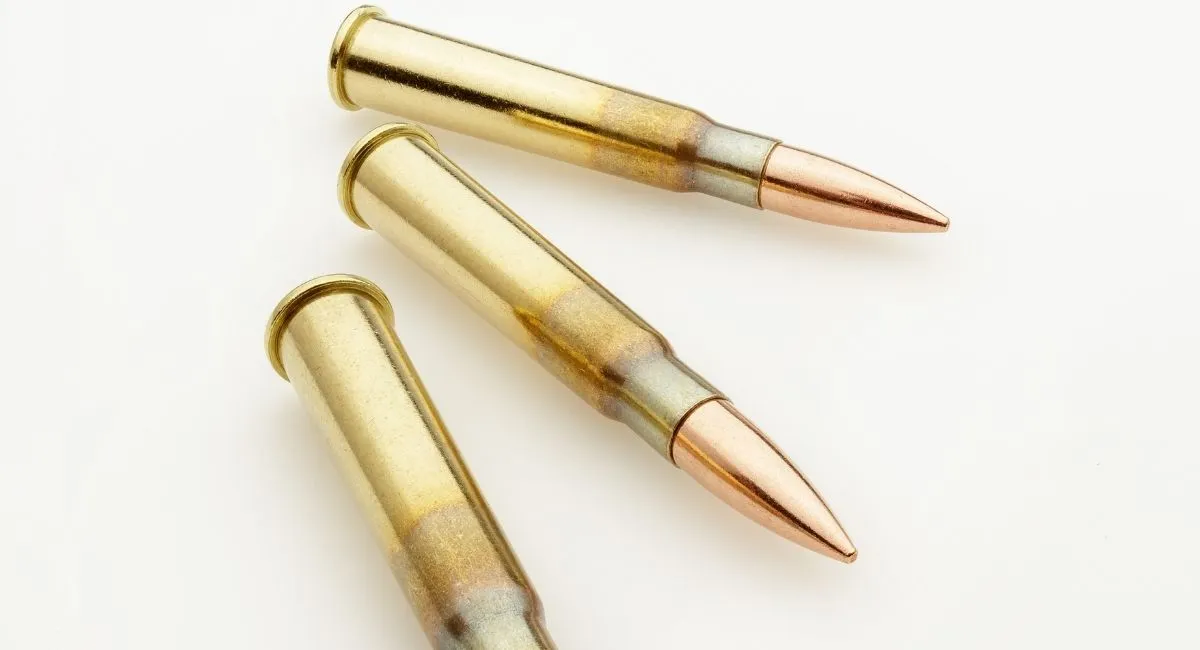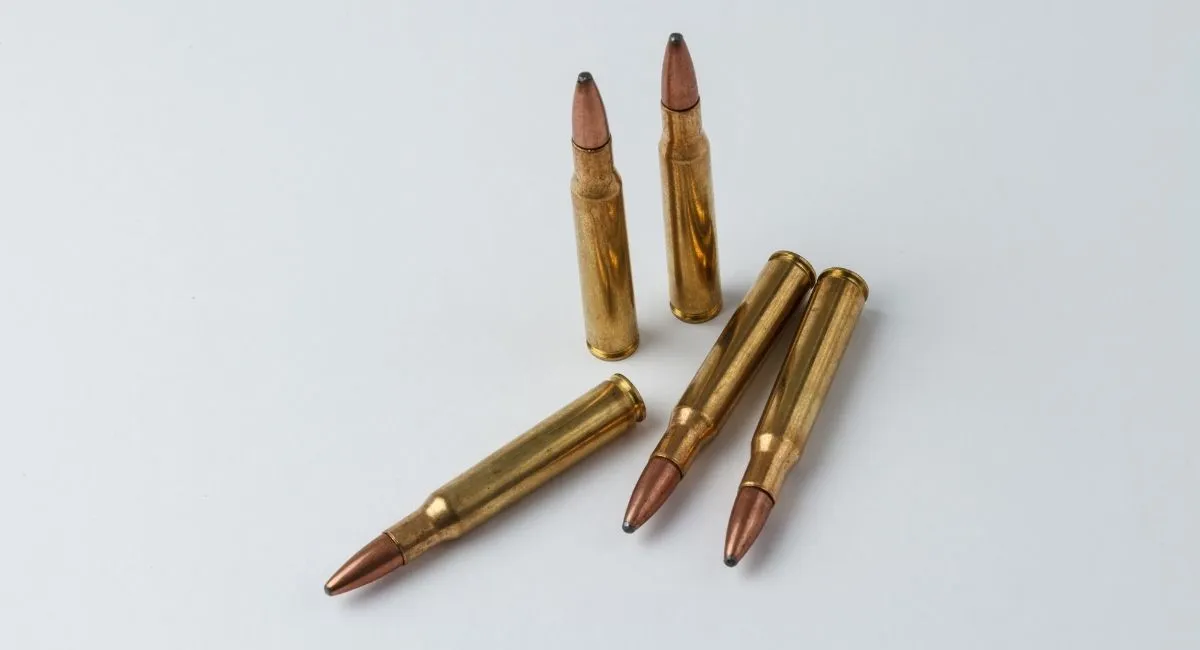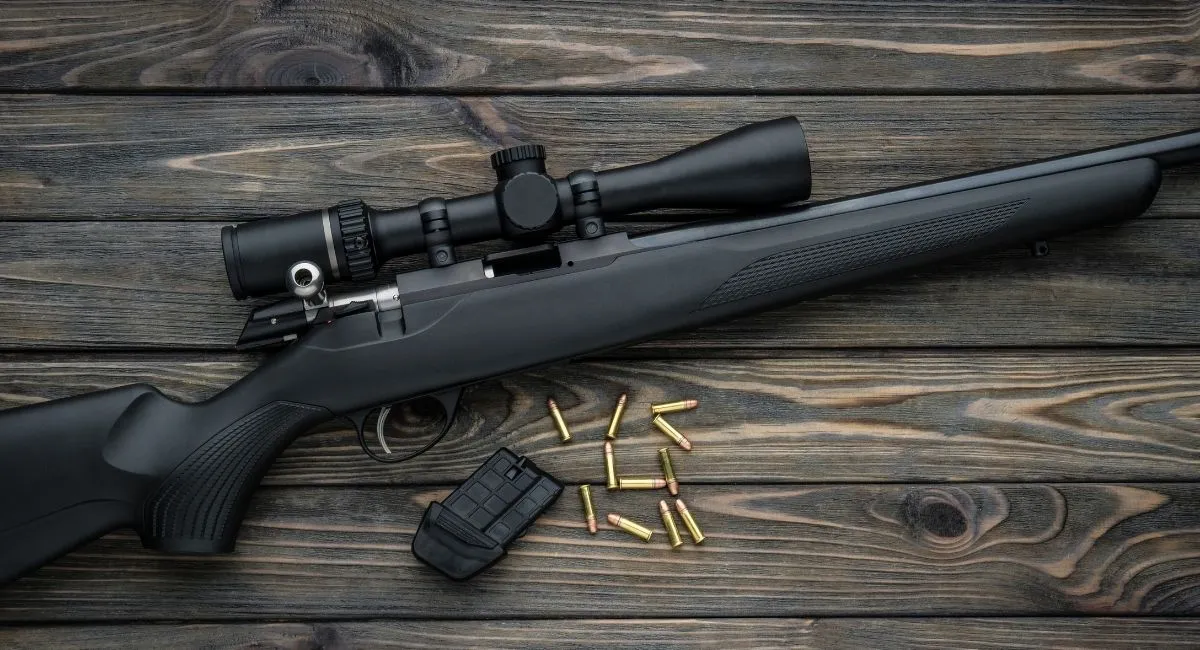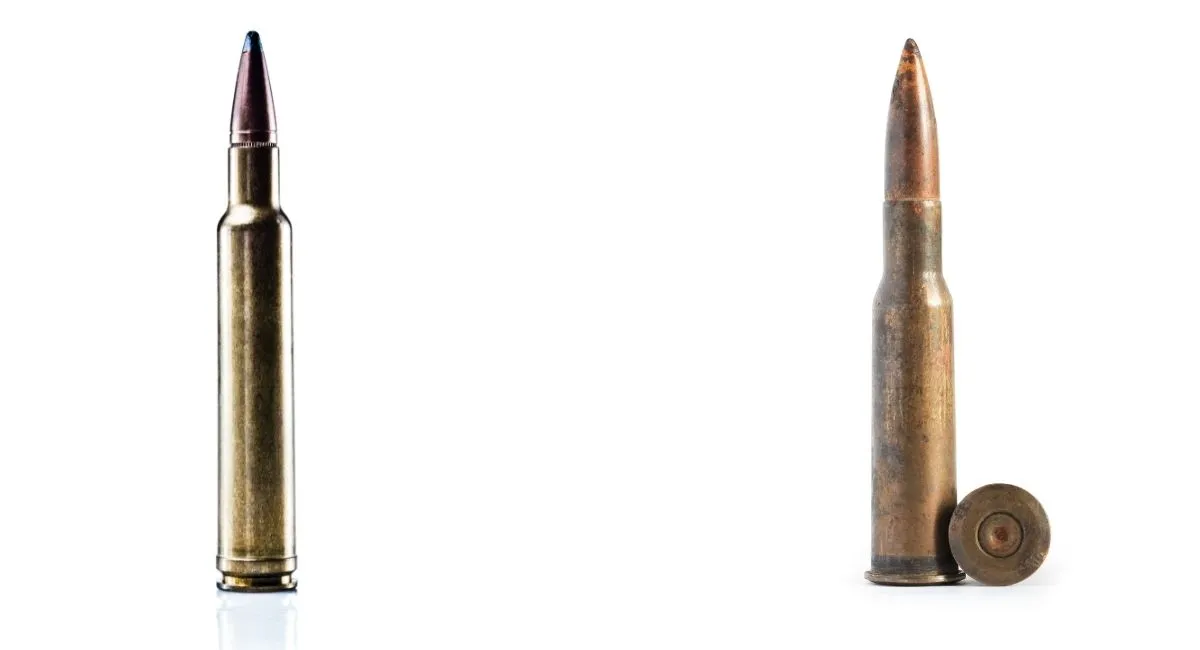You can find any type of cartridge you want on the market today, which can be a real problem when you have to make a decision. Your firearm and the reason you’re getting the cartridge are the biggest factors that determine which cartridge is the best for you.
You can use the .30-30 and the .30-06 for several purposes, including hunting and shooting competitions. In this article, we’ll compare the .30-30 vs. .30-36 as well as discuss each of their properties and applications.
The .30-30 Winchester
The .30-30 was released in 1895 and is a popular cartridge in deer and medium-game hunting because of its effectiveness. This cartridge was designed for the Winchester Model 1894 rifle, a lever-action gun. Its name is adapted from the bullet diameter (.308) because its cartridge uses 30 grains.
The .30-30 was mainly designed and marketed as a sporting cartridge, but the gun is perfect for both hunting and target shooting. Hunters also prefer this model because of both the rifle’s and the cartridge’s lower price. The lever-action gun consists of a tube magazine that requires flat-nosed bullets, and the .30-30 doesn’t have a pointy tip.
In the beginning, the .30-30 Winchester needed 160-grain bullets, although these days, you can get bullets with between 110 grains and 200 grains.

The .30-06 Springfield
This cartridge was developed in the early 1900s and was mainly designed for military and police force use. It’s also known as “Thirty Aught Six” and is common in bolt-action rifles.
Unlike the .30-30 Winchester, this cartridge is lighter and more powerful. Because it was adapted for military use, it’s mostly designed for speed and long-distance coverage.
The .30-06 Springfield is retired now, but it was the main cartridge used in WWI, WWII, Korea, and Vietnam. It isn’t used for military use now, but the design and purpose also make it perfect for deer hunting.
The cartridge can take a wide range of bullets ranging from 110 to 220 grains, with the most popular ranging between 150 and 180 grains.
This cartridge takes the cake when it comes to versatility. You can find it in ammunition stores, and it comes in different designs to cater to various hunting needs.

The Differences Between the .30-30 Winchester vs the .30-06 Springfield
Both cartridges are pretty similar in diameter, but they have significant differences that will help you make a decision between them.
Dimensions and Size
This is the only category where you’ll notice a similarity. Both cartridges fire the same diameter bullets (.308″). Still, the 30-30 Winchester is a slightly smaller cartridge compared to the .30-06. The base diameter is where the difference comes in — a 30-30 measures 0.47″ in diameter, while a 30-06 measures 0.42″.
The .30-30 cartridge is about 0.4″ shorter, so it only works with a short action rifle, while its counterpart works with a long action rifle. Short action rifles should, in theory, allow a hunter to take quicker follow-up shots.
The cartridge sizes mean that the .30-06 Springfield can carry more gun powder (68g of propellant) and can hold a power charge. This cartridge also allows you to use heavier bullets without compromising on ballistic properties.
The size and capacity affect the SAAMI spec maximum pressure. The 30-06 can handle 60,200 PSI in comparison to the 30-30, which can only handle 42000 PSI.
Ballistics
Ballistic properties include the trajectory, ballistic coefficient, and velocity. Each of these three features influences the others, and we will look at each of them and compare which one makes for better cartridges.
Ballistic Coefficient
The ballistic coefficient shows how well the bullet performs at wind and air resistance. We will not go into the formula to measure this, but the heavier the bullet, the higher its ballistic coefficient. On average, the ballistic coefficient of the .30-30 is 0.231, and the ballistic coefficient of the .30-06 is 0.427.
A higher ballistic coefficient means better target penetration and trajectory and a higher velocity. When the coefficient is higher, you can extend the range that your rifle can cover.
Trajectory
Shooting trajectory is mostly affected by velocity, and the .30-06 is much more effective in a flatter trajectory. This is especially if you want to shoot at a target that’s more than 100 yards away. Both cartridges will perform the same in lesser ranges.
Velocity
Velocity represents the speed of a bullet, and this affects each of the other features. The .30-06 is usually the winner in this category, as its bullets travel between 2500 to 3000 FPS primarily because of their size and weight. The .30-30 comes at a close second, with speeds ranging from 2200 to 2700 FPS.
Recoil
Although both cartridges fire the same bullet size, the .30-30 was designed for a lighter recoil. We can use a 150-grain bullet as an example because it can handle both cartridges.
When using a Remington Core-Lokt with these cartridges, you will feel a recoil of about 23 ft-lbs with the .30-06. With the 30-30, you’d feel a recoil of 14ft-lbs.
Recoil is mostly affected by case capacity and a muzzle’s velocity. The 30-06’s case is longer than the .30-30 and can carry more gun powder, meaning that the bullet will travel further. According to Remington’s stats, the 30-06’s muzzle velocity stands at 2910 FPS, while the muzzle velocity of the 30-30 is 2390 FPS.
A shooter will have to experience the other side of the higher muzzle velocity, and this is what recoil is all about. Because the 30-06 has a longer case, they will feel the recoil much more than a 30-30 shooter.
Stopping Power
The stopping power measures the ability of a bullet to cleanly take down a target without causing a large wound. This feature depends on how much energy the bullet carries, affecting how bad the penetration will be.
The stopping power depends on the sectional densities and the bullet momentum.
Sectional Energy
The purpose of the gun you chose matters when choosing the correct cartridge. For example, if you need a hunting rifle, then you’ll have to select bullets that can penetrate your target’s bones and thick hide.
You’ll need to measure your cartridge’s sectional density to determine how effectively your bullet will hit the target. Your bullet’s weight and diameter define sectional density.
With these two cartridges, the diameter is the same, but the .30-30 is heavier, although the difference in sectional density is negligible because the diameter is the same.
Most Whitetail deer hunters in North America prefer the 30-30, and it hasn’t failed them so far. The main concern we have is the range. For instance, to effectively hunt a deer, you need about 1000 ft-lbs of energy, which the 30-30 will be okay with at short ranges of 100 yards.
But, a 30-06 hunting rifle would be a better choice for long-distance shots. A deer is smaller than big-sized game such as elk and moose. For this, you’ll require between 1500 and 2200 ft-lbs of energy. These animals also require a closer shot compared to deer.
Momentum
The momentum will help determine how much penetration your bullet has in your target. The more momentum a bullet has, the more pronounced the target will be.
You will need more momentum to take down something as large as an elk because they have denser bones, more body fat, and a thick hide. When comparing the two cartridges, the .30.06 cartridge carries more momentum than the .30-30.
Accuracy
You’ll need many more factors to calculate the accuracy of a cartridge, including the rifle you’re using, your experience as a hunter, and the shooting range you’re working with.
Despite all these features, we have come up with a general idea of other features that can help measure accuracy. When it comes to factors such as ballistic coefficient, velocity, and trajectory, the .30-06 would most certainly win this race, especially for long-range shots.
The next thing to consider is the bullet momentum, especially for long distances. The .30-06 averages around 600 yards of supersonic flight, which gives it an edge over the .30-30.
When discussing accuracy with the .30-30, recoil comes to play. A hunter using the .30-30 is more likely to make more follow-up shots than one using the .30-06 because of its feather-light recoil.
Energy
A cartridge’s energy is mostly affected by its weight. Heavier items tend to move slower, and we have established that the .30-30 is slightly heavier than the .30-06, which means it travels at a lesser speed.
The laws of physics tell us that anything moving at a faster speed carries more kinetic energy than an item moving at a slower speed. This means that the .30-06 produces more kinetic energy and will likely kill larger game like moose.
When it comes to medium-sized game, both cartridges produce almost the same energy to penetrate their targets.
Reloading
Both cartridges need a large rifle primer and 30-caliber bullets. You have a ton of choices for 30-caliber projectiles because manufacturers such as Barnes, Nosler, Speer, and Hornady have huge selections of 30-caliber bullets. You can also choose between different bullets and powders to create your own custom-made ammo.

Pricing and Rifle Availability
There is no significant difference in pricing for both cartridges, and both fall under the $1/ round mark. The .30.06 is slightly more expensive, but this price difference is dwarfed by the number of benefits you get from the cartridges.
Since the .30-06 was a military issue, you can find affordable military surplus ammo for it instead of the .30-30 that relies on factory production.
The military is a big client, and because most manufacturers want to maintain the rifle’s popularity, they keep improving the cartridges. There are about three times more 30-06 bullet varieties than its 30-30 counterpart.
Popular .30-06 Rifles
Some of the rifles that support the .30-06 cartridge include:
- Browning X-Bolt
- Winchester Model 70
- Savage 110 Hunter
- Ruger Hawkeye
Popular .30-30 Rifles
Some of the modern rifles compatible with the .30-30 cartridge include:
- Marlin 336
- Mossberg 464
- Winchester Model 94
- Henry All-Weather Side-Gate Lever
Frequently Asked Questions (FAQs)
What Does .30-30 Mean?
The .30-30 (Winchester Center Fire/ WCF/ Winchester Smokeless) was Winchester’s brainchild before Marlin took over. The .30-30 follows a common cartridge naming structure. .30 represents the bullet caliber, while the second 30 stands for the grain capacity of the original bullet. This cartridge fires 0.308″ diameter bullets.
What Does .30-06 Mean?
The first 30 represents the caliber, and 06 shows when it was adopted (1906). The 06 is pronounced as “Aught Six.” This cartridge was designed after a series of failed cartridges made during the early 1900s. It was mainly a military issue but was later discontinued. These days, this cartridge is more efficient for hunting.
Which Cartridge is Better (.30-30 vs .30-06)?
Each of these cartridges has features that align with its purpose. The .30-06 wins the battle between the cartridges, especially when looking at the ballistic properties and energy. The .30-06 is also more versatile because you can effectively use it for hunting large and small animals.
However, when it comes to recoil, the .30-30 is far superior, and we recommend it for amateur hunters. The .30-30 penetrates game much more effectively and doesn’t ruin most of its meat.
Final Thoughts
Cartridge and gun comparisons are interesting topics, especially for hunters. The performance of your rifle and bullets will determine whether you’re returning home with deer or not.
This topic is beneficial for people who hunt and want to choose the right firearm depending on their terrain and intended hunting purpose.
Although the .30-30 is an all-time favorite among hunters, the .30-06 is giving it a run for its money mainly because of precision that holds up even with extensive distances and large game hunting. In terms of which is better, the .30-30 vs the .30-06, the choice boils down to your preference.
